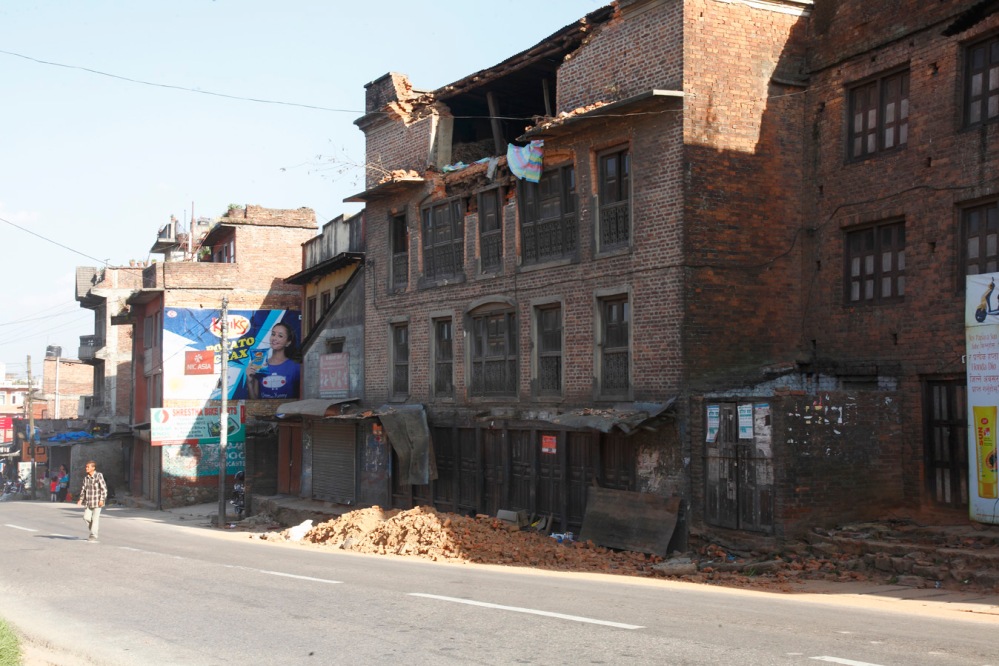25th April, 2015 Nepal Earthquake

Damaged houses on the road in Thankot (district Kathmandu).
Sita Shrestha said that she was on the third floor of her house and her six-year old son was on the ground floor. As soon as her house started shaking, she immediately went to the inner wall support and waited. Her son kept crying but did not come up to her. He had been taught to stay put and duck himself. The training helped her immensely in real-time earthquake. “No one rushed out of the house including the children. This also prevented people from getting hurt. We carried our go-bags so we could attend to minor injuries around the neighborhood; there was no electricity that night and the head lamp was useful.”, said Sita.
Sixteen women from Self Help Group (SHG) of Thankot (district Kathmandu) took 5 day training in Community Based Disaster Risk Management(CBDRM) focusing on earthquake in 2013-2014 of which 14 are working effectively in the field. This included information on emergency kit (preparing a go-bag), non structural damage, search and rescue and basic preparedness training during earthquake. The women group further disseminated the information with their family members and the neighborhood.
National Society for Earthquake technology-Nepal (NSET) has been running CBDRM training programs for communities to inform the communities about disaster, prepare them and lessen the impact of disasters. They have been doing it for more than decade now and have been reaching out to communities with a missionary zeal.
A major challenge the women group faced during the earthquake was with the elderly people who refused to come out. After a lot of convincing, they agreed to come out of their homes. Sita feels that the community over the years has realized the importance of this training program and now takes them seriously.
The women group has not trained any one so far but has implemented non structural measures in few schools, government hospital in Patan and health centres. There are 1800 members in the group and they hold a monthly meeting on CBDRM issues. Namrata Shrestha feels that the training program should not be limited to SHG groups but spread in every household. NSET should involve them more in their activities and training programs.
NSET trainer, Pavitra KC, social mobiliser feels that the training has helped them in the recent earthquake. Though the women did panic at the time of earthquake, they also remembered what they had learnt and implemented in the field.
